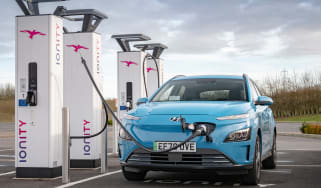Skoda Octavia review – the most practical family hatchback
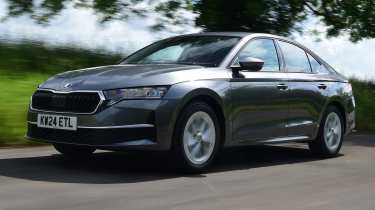
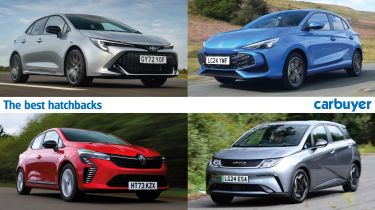
There’s a reason why hatchbacks have been popular for so long. For many drivers, they strike just the right balance of size, economy and practicality, with different models to suit all budgets. Cars like the Volkswagen Golf and Honda Civic have been carrying passengers on our roads for decades, serving the masses as a practical and affordable method of transportation.
In recent years, the car buying public has begun to throw its weight behind SUVs instead of traditional hatchbacks, saloons and estates, and there are fewer of these models to pick from today as a result. That said, several hatchbacks routinely appear on the list of best-selling cars in the UK, proving that drivers today still appreciate their small footprint, good practicality and affordability.
As the world gradually shifts towards electric power, the hatchback market has been one of the first to adopt this technology. Early models were expensive, but prices have begun to tumble, meaning some of the latest electric hatchbacks are just as affordable as their petrol counterparts. That’s before you consider the running cost savings if you can charge at home or at work.
Below, we’ve listed our favourite hatchbacks on sale today, including petrol, hybrid and electric options. For a selection of smaller cars, read our list of the best superminis, or alternatively, read our list of the best used hatchbacks if you’d rather not shop brand new.
Park the Skoda Octavia and Volkswagen Golf next to each other, and you probably wouldn’t guess they’re almost identical under the skin. A longer body and stretched boot make the Octavia look like a much larger car, and its luggage space is massive as a result. Despite the extra metalwork, the Octavia is no more expensive than the Golf, and we think it’s the nicer of the two to sit in, so it’s no surprise that it won our Best Family Car Award for 2025.
There’s 600 litres of space behind the back seats, and the boot lid opens to reveal a long and wide aperture. It’s a well-thought-out space too, with a 12V power supply, hooks for shopping bags or takeaways, and optional cargo nets to keep items secure. For a practical, affordable and well-equipped hatchback, you won’t find anything better than the Skoda Octavia. Those who need even more space are in luck – there’s also a Skoda Octavia Estate.
| Pros | Cons |
|
|
While the new electric Renault 5 is busy stealing headlines at the moment with its retro looks, the Renault Clio remains the go-to hatchback for most buyers. It offers excellent value and does everything that small hatchback buyers could want; it’s very efficient, good to drive and has a surprising amount of room inside. Plus, the interior feels pretty upmarket, too – we reckon it’s nicer than sitting in a Skoda Fabia or Honda Jazz.
But the star of the show is the optional E-Tech hybrid engine. This uses tech derived from Renault’s F1 programme, combining an efficient petrol engine with a pair of electric motors. It feels smoother than the hybrid system in a Toyota Yaris and it’s quick enough, accelerating the Clio from 0-62mph in around nine seconds. Fuel economy is its strong suit, though – Renault claims it will return up to 67mpg. Still, even the entry-level petrol engine will return around 54mpg, and is about £3,000 cheaper upfront.
| Pros | Cons |
|
|
Electric cars have ingrained themselves into the mainstream in recent years, but only now are we beginning to see some truly affordable models hit the market. The Citroen e-C3 might just be one of the best, with a starting price of around £22,000 – that’s a competitive price compared to all hatchbacks, not just electric ones. The e-C3 isn’t just cheap, however. Instead, it offers great value for money, packing a spacious interior and comfortable driving experience into a small, stylish package.
Those looking for a luxuriously appointed, tech-packed speed machine are likely to be left disappointed, but that’s not what the e-C3 is trying to be. Instead, Citroen has focused on what’s important to the majority of car buyers, and we think it’s nailed the brief. That being said, the boot space isn’t quite as generous as other hatchbacks, and some buyers may be put off by the scratchy interior plastics. But if you can look past those shortcomings, the e-C3 makes for an excellent electric hatchback.
| Pros | Cons |
|
|
The Skoda Fabia has proved a huge success since it was launched in the early 2000s as a budget-friendly alternative to the Volkswagen Polo and Ford Fiesta. The latest version feels of a higher build quality and more upmarket than ever before, offering much more value-for-money than rivals. One of the biggest selling points of the Fabia is its brilliant practicality for such a small car – its 380-litre boot is the best in its class and even gets close to rivalling boot sizes of cars from the class above.
Every version of the Skoda Fabia comes with a decent level of equipment, which seems to have trickled down from models higher in the range. Sleek LED headlights and tail-lights come as standard, and top-of-the-range models get premium features like a panoramic roof and heated steering wheel. The Fabia doesn’t come with a hybrid or even mild-hybrid option and its petrol engines are fairly basic, ranging from an entry-level 79bhp 1.0-litre model capable of up to 54.8mpg, to the most powerful 148bhp 1.5-litre option that can do 51.1mpg, meaning it won’t be too expensive to run, regardless.
| Pros | Cons |
|
|
It’s fair to say that the Volkswagen ID.3 launched to a fairly lukewarm reception in 2019. The car that was meant to bring electric motoring to the masses felt a bit underwhelming to drive, had a fiddly infotainment system and was much more expensive than we’d hoped. Fast forward to 2025, and Volkswagen has made some crucial changes that have placed the ID.3 as one of the best electric hatchbacks around.
It’s now much more affordable, starting from just under £31,000 and coming with 241 miles of range. Plus, interior quality has seen an improvement, with a much more usable infotainment system (although we still miss physical climate controls). You still get all the positives that the ID.3 arrived with, including a very spacious interior, fast charging speeds and nippy performance. If you’re willing to spend a bit more, you can upgrade to a model with a bigger battery, enabling up to 346 miles of range – impressive for a hatchback.
| Pros | Cons |
|
|
There’s been a lot of noise around MG in recent years, and it’s easy to see why. The British-Chinese brand has delivered some truly affordable family cars, but the MG3 might be one of its best deals yet. You can pick up a full-hybrid hatchback for just over £18,000, with even the top-spec model with all the bells and whistles costing just over £20,000. That’s a pretty good deal in our book, but there’s more going for the MG3 than just affordability.
The hybrid system delivers a total output of nearly 200bhp, giving it the spriteliness to rival some hot hatchbacks. But it does the efficiency part just as well, returning up to 64mpg – we saw around 55mpg during our testing over a mixture of roads, which is still pretty impressive. You get plenty of standard equipment, too, so there’s really not much reason to upgrade to the higher-spec model.
That said, the interior design is a bit drab, and the seating position might be a bit awkward for taller drivers, so it’s important to test before buying. In fact, space is probably the MG3’s weakest point – the boot is pretty small and rear seat passengers will be more comfortable in the Renault Clio.
BYD might not enjoy quite the same legacy as some of its rival European brands, but the Dolphin is an electric hatchback that can compete with the best. It burst onto the scene last year and swiftly picked up both the Carbuyer Best Small Electric Car award and the outright Car of the Year 2024 award – no small feat for the Chinese car maker’s UK debut. It ticks many of the boxes that matter to hatchback buyers; it’s affordable, practical and well-equipped.
We think the Dolphin would make a great first electric car for those ready to leave combustion power behind. It’s easy to drive and a range of over 200 miles means it can handle all but the longest of journeys. It sits somewhere between the old Ford Fiesta and a Ford Focus in size but the interior feels more generous than both of those cars, and the boot measures at a decent 345 litres. All in all, the Dolphin is hard to fault, although its maximum charging speed lags some way behind rivals.
| Pros | Cons |
|
|
We’ve been impressed with MG’s latest electric hatchback since its release, and the MG4 serves as a budget-friendly alternative to the likes of the Volkswagen ID.3 and Renault Megane E-Tech. In fact, the MG4 is still one of the cheapest electric cars on the market, so it could help plenty of buyers get their first taste of EV ownership. Its boot may not be the biggest in its class, but does beat other smaller electric city cars in its price range.
The range starts with an entry-level 168bhp model with a 51kWh battery providing a range of up to 218 miles. There’s a higher-spec Long Range version which comes with a 200bhp motor and 64kWh battery with a range of 281 miles. 150kW charging means it will do a 10-80% charge in just over half an hour.
The MG4 isn’t just good thanks to its affordability – it also comes with a generous amount of standard kit, including Apple CarPlay and Android Auto compatibility, adaptive cruise control, and plenty of safety systems. You also get premium tech such as a 360-degree camera, heated front seats and wireless phone charging on Trophy models.
| Pros | Cons |
|
|
The latest version of the Honda Civic represents a complete overhaul of Honda’s hatchback, and is the most hi-tech Civic ever. There’s only one powertrain of the latest Civic: a self-charging e:HEV hybrid system consisting of a 2.0-litre petrol engine paired with a 1.05kWh battery that also utilises regenerative braking to charge up. It’s an excellent system – so good, in fact, that we named the Civic as the Best Hybrid at last year’s Carbuyer Best Car Awards.
The Civic’s longer size means it’s roomier than before and offers a decent-sized boot, with 410 litres making it one of the more practical models in its class. It offers both a good driving experience and a comfortable ride – it can be a rare feat to achieve the two. Its interior is a big improvement over the previous model, with sturdy build quality and feel. It gets smartphone connectivity and at least a nine-inch touchscreen, upgraded to 10.2 inches on higher-spec cars. We even think the current Civic’s interior feels more upmarket than that of a Volkswagen Golf.
| Pros | Cons |
|
|
In a market full of exciting new electric models and ultra-affordable offerings, the Toyota Corolla can seem a bit forgettable. It may be one of the older models on this list, but the Corolla is still a hugely capable hatchback that will appeal to many drivers, thanks to its efficient hybrid system, spacious interior and reputation for rock-solid reliability.
Toyota was one of the first adopters of hybrid technology, and the Corolla uses the latest iteration of its self-charging system. Available in 1.8-litre or 2.0-litre guises, the Corolla’s four-cylinder engine will return up to 64mpg either way, making it one of the most fuel-efficient cars in its class. It’s a smooth system, too, and fairly punchy, although the CVT gearbox doesn’t encourage spirited driving. For most drivers, though, the Corolla delivers everything you could need from a family hatchback.
| Pros | Cons |
|
|
Take a look at the table below for a complete list of our 10 favourite hatchbacks. We’ve listed their Carbuyer score alongside their rough starting price.
| Best hatchback ranking | Make and model | Priced from | Carbuyer rating (out of 5) |
| 1 | Skoda Octavia | £27,000 | 4.7 |
| 2 | Renault Clio | £19,000 | 4.4 |
| 3 | Citroen e-C3 | £22,000 | 4.2 |
| 4 | Skoda Fabia | £20,000 | 4.4 |
| 5 | Volkswagen ID.3 | £31,000 | 4.4 |
| 6 | MG3 | £18,000 | 4.3 |
| 7 | BYD Dolphin | £26,000 | 4.3 |
| 8 | MG4 | £27,000 | 4.3 |
| 9 | Honda Civic | £35,000 | 4.3 |
| 10 | Toyota Corolla | £31,000 | 4.3 |
Hatchbacks have been a popular choice among UK car buyers for a number of years, though growing popularity of alternatives such as high-riding small SUVs means the market is smaller than it used to be. The latest hatchbacks are fighting back, though, with impressive fuel economy and even hybrid, plug-in hybrid, and electric power, but they’re still nimble, easy-to-manoeuvre and yet practical enough as a small family car.
Hatchback cars tend to be the best cars for families, as their large boots are easier to load with everything you need. Some of our best hatchbacks will offer a staggering amount of boot space in spite of their small overall dimensions. Hatchbacks are even making their way into more premium, luxury cars to make them more practical, as manufacturers try to offer as much as they can in one package.
Hatchback boots are also easy to access in almost any parking space and garage, with hydraulic struts or even electric power designed to make opening and shutting the boot easy. This is preferable to the side-opening tailgates of some SUVs like the Land Rover Defender, that can be awkward in tight gaps and very heavy.
Luckily, hatchback fans are spoiled for choice, because not only does just about every supermini and family car come with a hatch, so do most crossovers, SUVs and an increasing number of high-performance and electric cars. Our list of the best hatchbacks on sale in the UK right now includes everything from superminis, larger family-friendly models, hot hatches and luxury cars – many of which are electric.
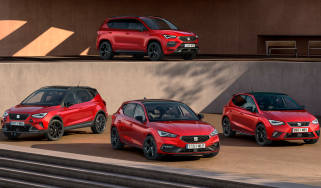
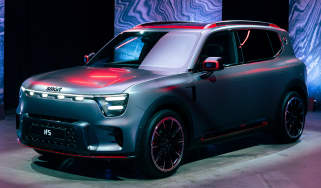
New Smart #5 Brabus is a 637bhp far cry from the brand’s city car past
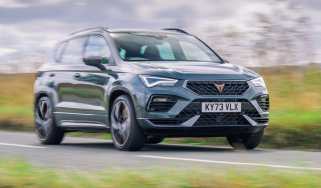
Best car leasing deals 2025: this week’s top PCH offers

